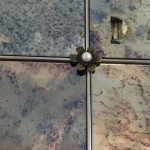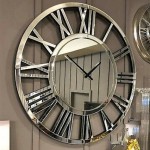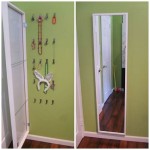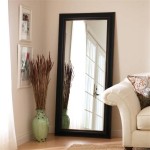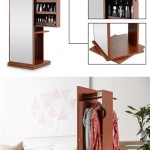How Do Anti-Fog Mirrors Work?
Foggy mirrors are a common annoyance, especially in bathrooms after a hot shower. The fog forms due to condensation, which occurs when warm, moist air comes into contact with a cooler surface, like the mirror. Anti-fog mirrors offer a convenient solution to this problem, employing various methods to prevent or minimize condensation.
Key Mechanisms Behind Anti-Fog Mirrors
Several technologies prevent fogging on mirrors. Understanding these mechanisms provides insight into selecting the best anti-fog solution for specific needs.
- Heating the mirror surface.
- Applying a hydrophilic coating.
- Utilizing ventilation.
Heating the Mirror Surface
This is the most common and effective method for preventing fogging. A heated mirror surface maintains a temperature above the dew point, the temperature at which water vapor condenses. By preventing the mirror's temperature from dropping below the dew point, condensation is avoided.
- Low-voltage heating elements are often embedded within the mirror.
- These elements gently warm the mirror, preventing water vapor from condensing.
- Heated mirrors are typically wired into the bathroom's electrical system.
- Some models offer a built-in timer or on/off switch for energy conservation.
Hydrophilic Coatings
Hydrophilic coatings attract water molecules, preventing them from forming tiny droplets that scatter light and create the foggy appearance. Instead, the water spreads evenly across the coated surface, forming a thin, transparent film. This film allows light to pass through, maintaining the mirror's reflectivity.
- These coatings are often applied during the manufacturing process.
- They work by reducing the surface tension of the mirror.
- This allows the condensed water to spread into a uniform, transparent layer.
Ventilation
While less common for mirrors specifically, ventilation plays a crucial role in managing humidity in the bathroom, thereby preventing condensation. Proper ventilation removes moist air, reducing the likelihood of fog forming on any surface, including mirrors.
- Exhaust fans actively remove moist air from the bathroom.
- Open windows can also aid in ventilation, reducing humidity levels.
- Ventilation is a preventative measure, addressing the root cause of fogging.
Types of Anti-Fog Mirrors
Various types of anti-fog mirrors utilize the mechanisms described above. Understanding these variations can help consumers make informed choices.
- Heated mirrors are available in various sizes and styles.
- Some mirrors combine heated elements with hydrophilic coatings for enhanced performance.
- Anti-fog films and sprays offer a retrofit solution for existing mirrors.
Anti-Fog Films and Sprays
For those not looking to replace their existing mirrors, anti-fog films and sprays offer a viable alternative. These solutions typically employ hydrophilic coatings that can be applied to the mirror surface. While offering a more affordable option, these treatments may require periodic reapplication.
- Films are applied directly to the mirror surface, creating a hydrophilic layer.
- Sprays create a similar effect, but may require more frequent reapplication.
- These options offer a cost-effective way to add anti-fog properties to existing mirrors.
Considerations When Choosing an Anti-Fog Mirror
Several factors should be considered when selecting an anti-fog mirror.
- Cost: Heated mirrors typically involve a higher initial investment compared to films or sprays.
- Installation: Heated mirrors may require professional installation for electrical connections.
- Maintenance: Hydrophilic coatings, films, and sprays may require periodic reapplication.
- Energy consumption: Heated mirrors consume electricity, while other solutions do not.
The Science of Condensation
Understanding the science behind condensation is crucial for comprehending the effectiveness of anti-fog measures. Condensation occurs when the air reaches its saturation point, the point at which it can no longer hold any more water vapor. When this saturated air comes into contact with a cooler surface, the water vapor condenses into liquid water droplets.
- Warm air holds more moisture than cold air.
- The dew point is the temperature at which condensation begins to form.
- Relative humidity measures the amount of water vapor present in the air compared to its saturation point.

How Anti Fog Led Bathroom Mirrors Can Do Wonders Is It Worth

How Do Fog Free Mirrors Work And Why They Up The Clever Homeowner

What Are The Benefits Of An Anti Fog Mirror Victoriaplum Com

How Steam Free Mirrors Work Top Picks S Bathtubber

What Are The Benefits Of An Anti Fog Mirror Victoriaplum Com

Why Does Your Bathroom Mirror Need To Be Anti Fog

Why Does Your Bathroom Mirror Need To Be Anti Fog

How To Keep Your Bathroom Mirror Fog Free The Creek Line House

The Only Fogless Shower Mirror That Works

Are Bathroom Mirrors Diffe Victoriaplum Com

